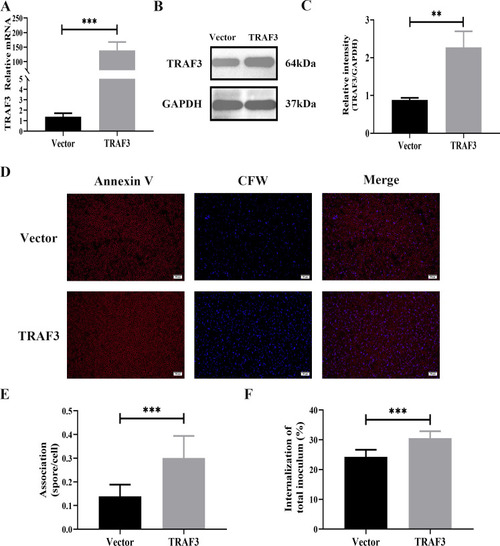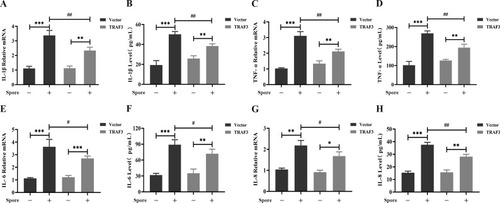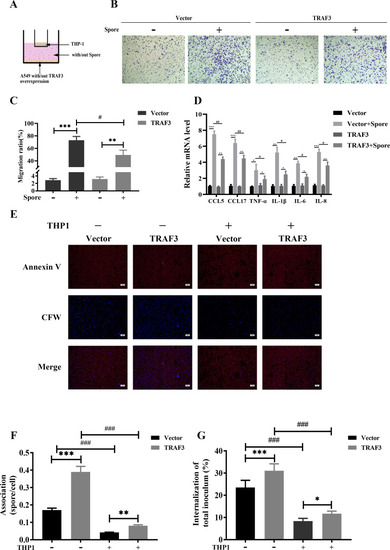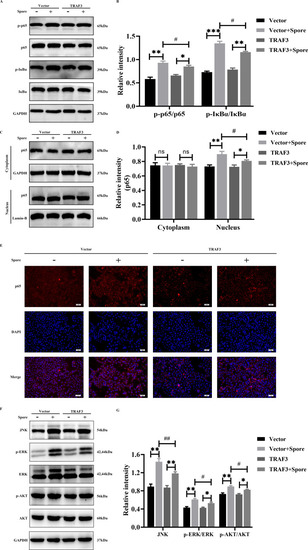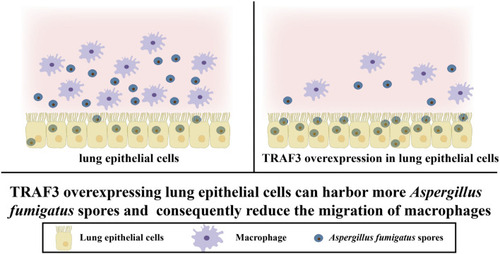- Title
-
TRAF3 gene regulates macrophage migration and activation by lung epithelial cells infected with Aspergillus fumigatus
- Authors
- Shang, S., He, D., Liu, C., Bao, X., Han, S., Wang, L.
- Source
- Full text @ Microbiol Spectr
|
Lung epithelial cell TRAF3 expression is down-regulated under |
|
TRAF3 overexpression promotes lung epithelial cell adhesion and internalization of |
|
TRAF3 inhibits the inflammatory response of |
|
TRAF3 inhibits macrophage migration and macrophage cytokine production by lung epithelial cells infected with |
|
TRAF3 overexpression inhibits the activation of NF-κB and MAPK signaling pathways in |
|
TRAF3 overexpression reduces survival and promotes fungal load |
|
Schematic representation of epithelial cells infected with |


